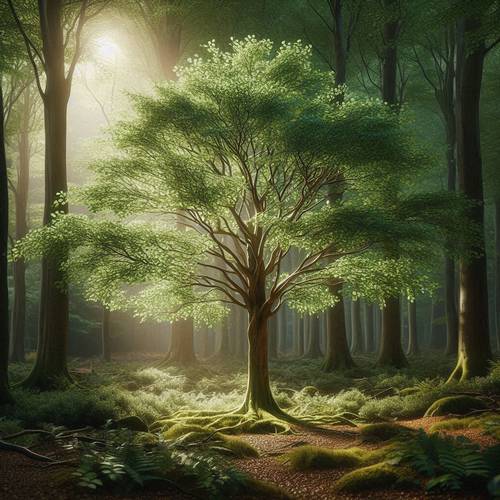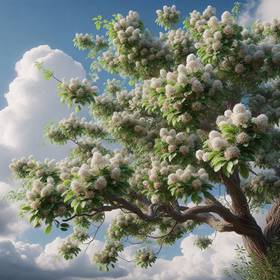Distinctive Features
The Hackberry Tree (Celtis occidentalis), a member of the elm family, is easily recognizable by its unique combination of features. It typically develops a rounded or vase-shaped form with a spreading canopy, reaching heights of 40-60 feet. One of its most defining traits is its corky bark, which develops distinctive, warty growths that resemble pimples or warts.
This rough bark provides the tree with protection from harsh weather and insects. Hackberry trees also produce small, round fruits called drupes, which mature from green to a dark purple or black and are a favorite food source for birds and other wildlife. Their overall shape, textured bark, and distinctive fruits make them stand out in the landscape.
This rough bark provides the tree with protection from harsh weather and insects. Hackberry trees also produce small, round fruits called drupes, which mature from green to a dark purple or black and are a favorite food source for birds and other wildlife. Their overall shape, textured bark, and distinctive fruits make them stand out in the landscape.
Leaf Shape and Texture
Hackberry leaves are alternate, simple, and oval-shaped, with a slightly asymmetrical base. They are 2-5 inches long and 1-3 inches wide, with a finely toothed margin. The leaves have a slightly rough texture and are a medium green color, turning a golden yellow in the fall.
Their unique shape and slightly rough feel make them easily identifiable. Unlike the smooth, glossy leaves of some other trees, Hackberry leaves have a subtle roughness that is noticeable to the touch. This texture, combined with the slightly asymmetrical base and finely toothed margin, helps to distinguish Hackberry leaves from other species.
Their unique shape and slightly rough feel make them easily identifiable. Unlike the smooth, glossy leaves of some other trees, Hackberry leaves have a subtle roughness that is noticeable to the touch. This texture, combined with the slightly asymmetrical base and finely toothed margin, helps to distinguish Hackberry leaves from other species.
Bark Appearance
The Hackberry Tree's bark is one of its most distinctive characteristics. It is a light gray to grayish-brown color and develops a corky, warty texture as the tree matures. These corky growths can be small and scattered, or they can be large and prominent, giving the bark a distinctive, almost bumpy appearance.
This unusual bark makes the Hackberry Tree easy to identify, even from a distance. The texture of the bark can be compared to the skin of a cantaloupe or the surface of a rough-textured stone.
This unusual bark makes the Hackberry Tree easy to identify, even from a distance. The texture of the bark can be compared to the skin of a cantaloupe or the surface of a rough-textured stone.
Fruit and Seeds
The Hackberry Tree produces small, round fruits called drupes, which mature from a green color to a dark purple or black. These fruits are about 1/4 inch in diameter and contain a single hard seed. The fruits are a favorite food source for birds and other wildlife, attracting a variety of species to the tree throughout the year.
The presence of these small, dark fruits, along with the other identifying features, can help confirm the presence of a Hackberry Tree. The fruits are often described as having a sweet, slightly tart flavor.
The presence of these small, dark fruits, along with the other identifying features, can help confirm the presence of a Hackberry Tree. The fruits are often described as having a sweet, slightly tart flavor.



